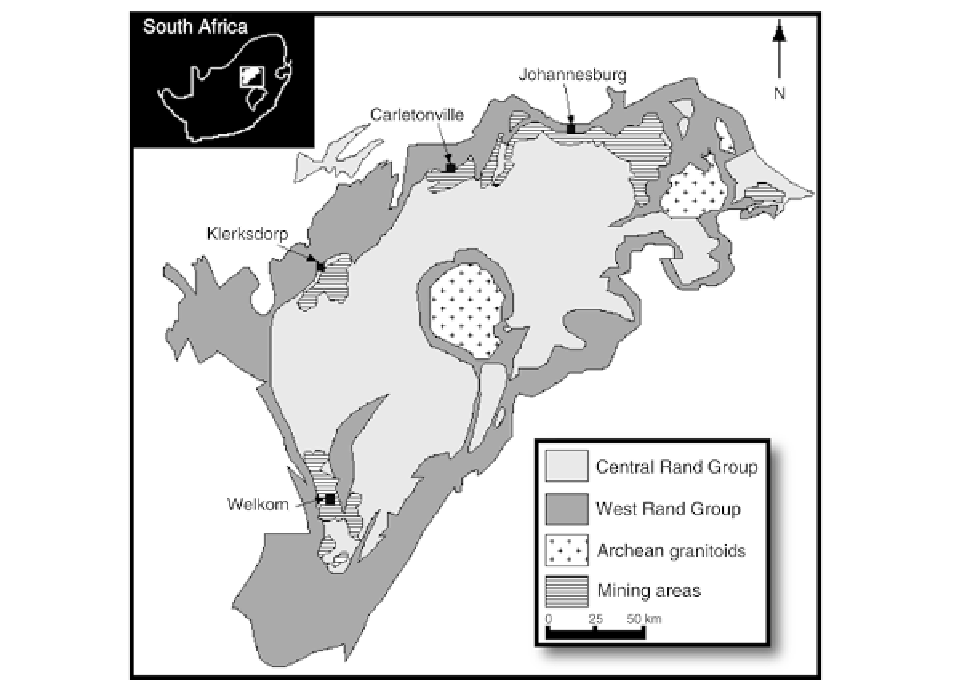Geology Reference
In-Depth Information
Fig. 15.9
Location map of the Witwatersrand structural basin, South Africa showing the distribution of the West Rand and
Central Rand groups (Modified from Catuneanu and Biddulph
2001
)
(thickening followed by thinning of laminae) (cf. Kvale
et al.
1999
). Spectral analysis using a Fast Fourier
Transform program on the complete data set reveals a
peak at 2.3 and on the data set from which inferred
subordinate (thinner) laminae had been removed
(Fig.
15.16
) reveals peaks at 8.6 and 10.6.
drapes, and flaser, wavy and lenticular bedding. More
recently, Eriksson and Simpson (
2000
) and Eriksson
et al. (
2006
) have documented rhythmically interlami-
nated sandstones and mudstones (tidal rhythmites) in
which different orders of tidal cyclicity can be recog-
nized. Tidal rhythmites in the Moodies Group are
preserved as flat-laminated rhythmites, as described
above from the Elatina-Reynella succession in South
Australia, but more commonly as bundles of sandstone
foresets separated by mudstone drapes.
In Dycedale Syncline, three facies associations are
recognized: (1) structureless conglomerate; (2) cosets
of trough and tabular cross-bedded sandstone; and
(3) interlaminated sandstone, siltstone and mudstone
(Eriksson et al.
2006
). These facies are arranged in
45-140 cm-thick, fining-upward packages in which
the proportion of interlaminated sandstone, siltstone
and mudstone increases upwards. Cross-bedded sand-
stone ranges in grain size from very coarse to fine
sand. Locally, pebble stringers define set boundaries.
15.3.4 Moodies Group, Barberton
Greenstone Belt, South Africa
The Moodies Group in the Barberton Greenstone Belt
(Fig.
15.17
) is the uppermost of three stratigraphic
intervals that compose the Swaziland Group. The age
of the Moodies Group is well constrained at around
3.25 billion years (Kamo and Davis
1994
; Heubeck
et al.
1993
). Sedimentary structures of inferred tidal
origin were first described from the Moodies Group by
Eriksson (
1977
) who reported herringbone cross bed-
ding, bimodal-bipolar paleocurrent patterns, mudstone

